eTrade 2000 Annual Report Download - page 14
Download and view the complete annual report
Please find page 14 of the 2000 eTrade annual report below. You can navigate through the pages in the report by either clicking on the pages listed below, or by using the keyword search tool below to find specific information within the annual report.-
 1
1 -
 2
2 -
 3
3 -
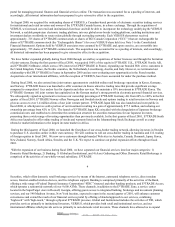 4
4 -
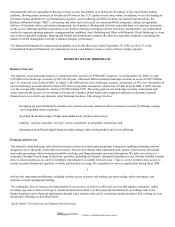 5
5 -
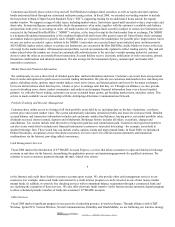 6
6 -
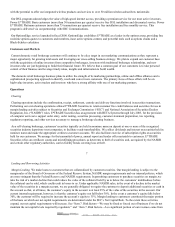 7
7 -
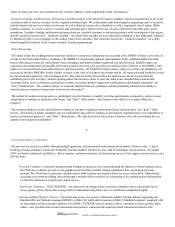 8
8 -
 9
9 -
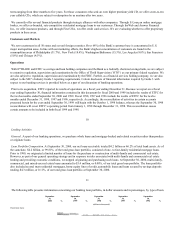 10
10 -
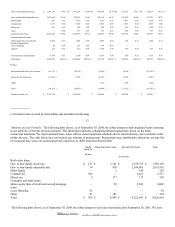 11
11 -
 12
12 -
 13
13 -
 14
14 -
 15
15 -
 16
16 -
 17
17 -
 18
18 -
 19
19 -
 20
20 -
 21
21 -
 22
22 -
 23
23 -
 24
24 -
 25
25 -
 26
26 -
 27
27 -
 28
28 -
 29
29 -
 30
30 -
 31
31 -
 32
32 -
 33
33 -
 34
34 -
 35
35 -
 36
36 -
 37
37 -
 38
38 -
 39
39 -
 40
40 -
 41
41 -
 42
42 -
 43
43 -
 44
44 -
 45
45 -
 46
46 -
 47
47 -
 48
48 -
 49
49 -
 50
50 -
 51
51 -
 52
52 -
 53
53 -
 54
54 -
 55
55 -
 56
56 -
 57
57 -
 58
58 -
 59
59 -
 60
60 -
 61
61 -
 62
62 -
 63
63 -
 64
64 -
 65
65 -
 66
66 -
 67
67 -
 68
68 -
 69
69 -
 70
70 -
 71
71 -
 72
72 -
 73
73 -
 74
74 -
 75
75 -
 76
76 -
 77
77 -
 78
78 -
 79
79 -
 80
80 -
 81
81 -
 82
82 -
 83
83 -
 84
84 -
 85
85 -
 86
86 -
 87
87 -
 88
88 -
 89
89 -
 90
90 -
 91
91 -
 92
92 -
 93
93 -
 94
94 -
 95
95 -
 96
96 -
 97
97 -
 98
98 -
 99
99 -
 100
100 -
 101
101 -
 102
102 -
 103
103 -
 104
104 -
 105
105 -
 106
106 -
 107
107 -
 108
108 -
 109
109 -
 110
110 -
 111
111 -
 112
112 -
 113
113 -
 114
114 -
 115
115 -
 116
116 -
 117
117 -
 118
118 -
 119
119 -
 120
120 -
 121
121 -
 122
122 -
 123
123 -
 124
124 -
 125
125 -
 126
126 -
 127
127 -
 128
128 -
 129
129 -
 130
130 -
 131
131 -
 132
132 -
 133
133 -
 134
134 -
 135
135 -
 136
136 -
 137
137 -
 138
138 -
 139
139 -
 140
140 -
 141
141 -
 142
142 -
 143
143 -
 144
144 -
 145
145 -
 146
146 -
 147
147 -
 148
148 -
 149
149 -
 150
150 -
 151
151 -
 152
152 -
 153
153 -
 154
154 -
 155
155 -
 156
156 -
 157
157 -
 158
158 -
 159
159 -
 160
160 -
 161
161 -
 162
162 -
 163
163 -
 164
164 -
 165
165 -
 166
166 -
 167
167 -
 168
168 -
 169
169 -
 170
170 -
 171
171 -
 172
172 -
 173
173 -
 174
174 -
 175
175 -
 176
176 -
 177
177 -
 178
178 -
 179
179 -
 180
180 -
 181
181 -
 182
182 -
 183
183 -
 184
184 -
 185
185 -
 186
186 -
 187
187 -
 188
188 -
 189
189 -
 190
190 -
 191
191 -
 192
192 -
 193
193 -
 194
194 -
 195
195 -
 196
196 -
 197
197 -
 198
198 -
 199
199 -
 200
200 -
 201
201 -
 202
202 -
 203
203 -
 204
204 -
 205
205 -
 206
206 -
 207
207 -
 208
208 -
 209
209 -
 210
210 -
 211
211 -
 212
212 -
 213
213 -
 214
214 -
 215
215 -
 216
216 -
 217
217 -
 218
218 -
 219
219 -
 220
220 -
 221
221 -
 222
222 -
 223
223 -
 224
224 -
 225
225 -
 226
226 -
 227
227 -
 228
228 -
 229
229 -
 230
230 -
 231
231 -
 232
232 -
 233
233 -
 234
234 -
 235
235 -
 236
236 -
 237
237 -
 238
238 -
 239
239 -
 240
240 -
 241
241 -
 242
242 -
 243
243 -
 244
244 -
 245
245 -
 246
246 -
 247
247 -
 248
248 -
 249
249 -
 250
250 -
 251
251 -
 252
252 -
 253
253 -
 254
254 -
 255
255 -
 256
256 -
 257
257 -
 258
258 -
 259
259 -
 260
260 -
 261
261 -
 262
262 -
 263
263
 |
 |

Commercial 657 664 372 568 1,217
Land — — 316 — —
Home equity lines of credit and
second mortgage loans
— 21 255 — 54
Other — 60 205 — —
Total 12,048 8,340 8,875 10,927 10,250
TDRs — — — 425 435
Total of non-accrual loans and
TDRs
12,048 8,340 8,875 11,352 10,685
REO: One- to four-family 850 539 1,460 681 1,300
Valuation allowance for REO — — — — (65 )
Total REO, net 850 539 1,460 681 1,235
Total non-performing assets, net $ 12,898 $ 8,879 $ 10,335 $ 12,033 $ 11,920
Total non-performing assets, net,
as a percentage of total bank
assets
0.14 %
0.21 %
0.45 %
1.09 %
1.84 %
Total loss allowance as a
percentage of total non-
performing loans, net
90.72 %
85.86 %
53.70 %
31.66 %
27.67 %
During fiscal 2000, our non-performing assets increased by $4.0 million, or 45.3%, to $12.9 million at September 30, 2000 from $8.9
million at September 30, 1999. As a matter of policy, we actively monitor our non-performing assets.
During fiscal 2000 and 1999, if our non-accruing loans had been performing in accordance with their terms, we would have recorded
interest income of approximately $845,000 and $550,000, respectively. However, none of the interest income disclosed was
recognized as income during the periods.
Special Mention Loans . In certain situations, a borrower’ s past credit history may lead to doubt regarding the borrower’ s ability to
repay under the loan’ s contractual terms, whether or not the loan is delinquent. Such loans, classified as “special mention” loans,
continue to accrue interest and remain as a component of the loans receivable balance. These loans represented $148,000 of the total
loan portfolio at September 30, 2000, and are actively monitored.
15
Allowance for Loan Losses. As an investor in mortgage loans, we recognize that we will experience occasional credit losses. We
believe the risk of credit loss varies with, among other things, the following:
type of loan;
creditworthiness of the borrower over the term of the loan;
general economic conditions; and
in the case of a secured loan, the quality of the security for the loan.
Our policy is to maintain an adequate allowance for loan losses based on, among other things, the following:
our historical loan loss experience;
regular reviews of delinquencies and loan portfolio quality;
the industry’ s historical loan loss experience for similar asset types; and
evaluation of economic conditions.
We increase our allowance for loan losses when we estimate that losses have been incurred by charging provisions for probable loan
losses against income. Charge-offs reduce the allowance when losses are confirmed.
2002. EDGAR Online, Inc.
